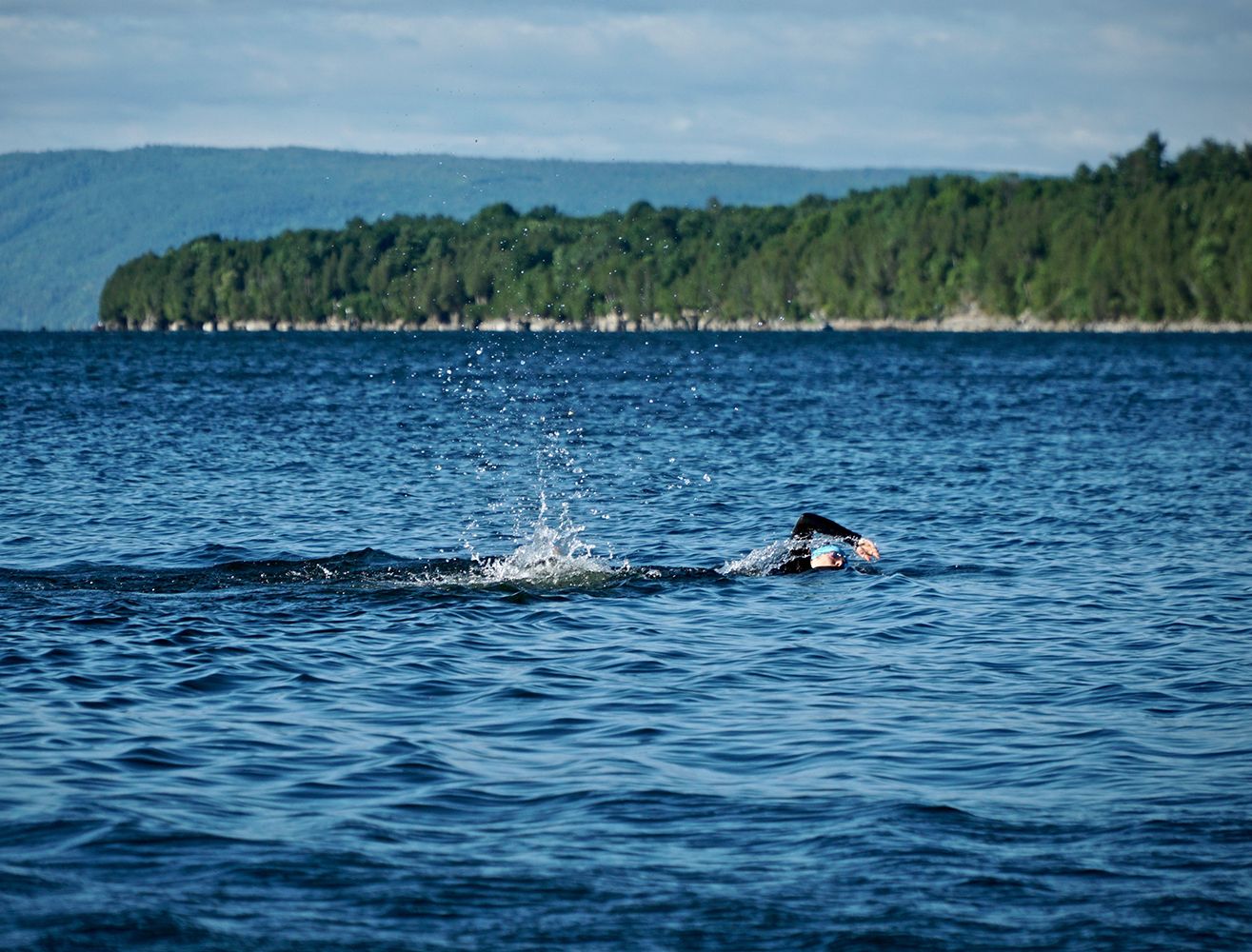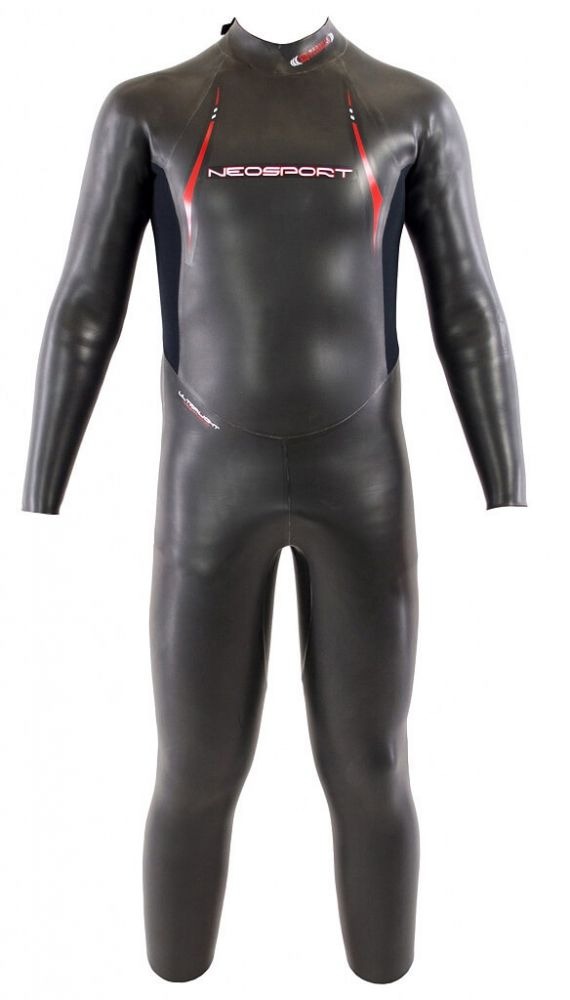Pool Closed? Tips on Swimming Outdoors
Adam Himmelwright April 17th, 2020 Posted In: Articles Tags: Triathlon
‘New Normal’: Tips on Swimming Outdoors During COVID-19
Hello, swim fam! Coronavirus have your local pool closed forcing you to resort to swimming outdoors? We’ve all been talking a lot lately about our new normal amidst the COVID-19 social distancing. One of the biggest dilemmas currently, is how to get that all-important workout in. We all have our motivators to get in a good workout, but right now just the simple fact that we are urged to stay inside seems to be pushing me just enough to want to get out and move!
 However, we cannot overlook the reality that some of us have been deemed “essential” and are still working our 9-5 (or 7-5:30, but who’s counting?) jobs. Some of us are able to work from home (and teach our kids from home, and take care of the household chores from home, etc.). BUT! Not all of us can nonchalantly drive to our local indoor-heated-pool to get in our training laps. Hence why you might have to resort to swimming outdoors.
However, we cannot overlook the reality that some of us have been deemed “essential” and are still working our 9-5 (or 7-5:30, but who’s counting?) jobs. Some of us are able to work from home (and teach our kids from home, and take care of the household chores from home, etc.). BUT! Not all of us can nonchalantly drive to our local indoor-heated-pool to get in our training laps. Hence why you might have to resort to swimming outdoors.
How to Swim Without Access to a Pool
So, now for the important part of this article: can we modify our daily workout routine? Can we still get in a good workout while our only option is to stick close to home? Is it even possible? The answer is YES! We can. BUT! We have to think outside the box (and outside of our “normal”). I bet if you let all expectations of your “normal” go and come to a place where you can be accepting of your “new normal,” you will swiftly fall into a workable workout plan. Here’s a little help on swimming outdoors during the COVID-19 pandemic. And even some options on where you can swim!
I, for one, am fortunate in that I live within a short drive to a variety of open water access – be it a river, lake(s) or pond(s). Do you? Sure, it’s cold. But, you have a wetsuit, right? If not, then I can direct you to a great place to rent or purchase one :). Maybe you have your own personal pool, filled with ice-cold water, that you are not afraid of swimming in right now. Or perhaps you know someone with a pool, also filled with ice-cold water, that you could convince to open a little early? Offer them a little of your toilet paper stash and they might agree.
Swimming Options In Your Area!
Now, where can you swim when the pools are closed during the COVID-19 pandemic? I’ve been known to call a state park that is nearby, to see if they allow swimming. Do you have a river nearby (that is safe to swim in, of course)? Start scouting! The Potomac River is local to me, and I am particularly accustomed to the section along the Cushwa Basin. One can find ample parking, flat/calm water, and lots of grassy space to spread out. I feel it is also important for me to say that I tend to gravitate towards places that are relatively bumpin’. You know what I mean – NOT secluded. I prefer there to be plenty of people around, especially if I am swimming solo, just in case.
This is where I’ll give you a few minutes to think really hard, outside of the box, to locate a potential spot….(humming “It’s The End Of The World As We Know It”)….Okay, you got your spot?
Outdoor Swimming Gear
Great! Now let’s talk about that gear! Cause where I live, the water temp is still well into the 50-degree mark. That means, yep, you guessed it (or maybe you read about it earlier in this article), you need a wetsuit! I’ve written an article before that talked about when to wear a triathlon wetsuit. Anything below 65ish degrees, it is almost necessary to have a full sleeve wetsuit – plus a couple of additional accessories – in order to keep warm, comfortable, and safe.
A great quality suit is most definitely worth the extra money spent. Not only will it last much longer than a cheap(er)/less quality suit, it will keep you warmer and safer. And it will most definitely be safer. As far as brands go, both Neosport and blueseventy have great suit options. You won’t be sorry about spending a little extra. You will have an easier time getting the suit on, moving around in the suit and it will do a better job of keeping you warm in all the right places.
Remember the old saying “you lose 80% of body heat through your head”? No? Just me? Well, that was said to me a time or two growing up, which is why I was told to wear a hat on a cold day. This may or may not be true, but you 100% want to believe this when it comes to deciding if you want to also wear a cap or hood. The first time I used my cap, I was literally blown away by what it did for me while in cold water!
Prior to putting it on, it didn’t seem like it would do what it said it would. Was I ever wrong on that thought! The fit was comfortable and not too tight. The chin strap helped keep the sides down and, subsequently, my head warmer. Just a side note here – I like to put a bright colored swim cap over the top of my cap. It simply adds a bit of visibility while swimming in open water.
Next, you’ll want to make sure your hands and feet stay warm (sorry about your face; it’s going to be cold simply until you warm-up). Gloves and booties are available to help warm your hands and feet. In case you are curious, gloves/booties do not create any added resistance to your stroke or kick.
Lastly, when talking about open water swimming gear, we need to touch on safety and visibility. One of the best methods, in my humble opinion, to stay visible while swimming in open water is to have a swimmer pod. Having one is a GREAT way to stay visible to your fellow water goers (whether they are also swimming or in a boat of some sort). The pods fill with air and feature an attachable tether. It’s basically like having your own human-inspired bobber. I’ve used these for several years and can tell you Swimmer Pods are beneficial to your swimming career. They have a pocket that can hold extra gear and they also double as a flotation device, should you need it.
As an active and competent swimmer I, personally, rarely set out to swim in open water alone. Simply put, it’s just not safe. You should, at the very least, have someone on the shoreline keeping an eye on you the entire time, who also has the ability to assist or call for assistance if needed. Ideally, an even safer scenario is having someone supporting you from a kayak, canoe, or SUP. From here, just visualize where your swim will take you.
This is your practice swim, no one else’s. It’s best to start out with low expectations. No need to shatter any records right off the land. I also tend to stay closer to the shoreline when swimming in rivers and large lakes, in an effort to stay clear of boaters. Furthermore, staying near the shoreline will guarantee that, if something happens, you can more easily and swiftly exit the water quickly.
Lastly, and still just as important, how you care for your wetsuit after your open water swim matters a whole lot. After it is off, I like to wrap my wetsuit in a towel or two. Once home, I give a thorough rinse using my garden hose. This works to get all the open water gunk rinsed off. When drying, DO NOT let your wetsuit dry in direct sunlight. Direct sunlight can and will damage the wetsuit material and the adhesives that keep your suit intact.
After rinsing, I turn my suit inside out and hang it on a sturdy, thick hanger. From there, when inside out and on a good hanger, I hang it from a beam in my garage and it has proven to dry relatively quickly. Bonus if you have a fan in your garage (or any area where your wetsuit is hanging) that you can turn on to help in the drying process.
If swimming in a chlorinated or chemically treated pool, you will need to give your wetsuit a full-on bath using a wetsuit shampoo/soap, such as this one: Rivivex Wetsuit shampoo. After your wetsuit has had its bath, hang it to dry as previously stated.
WOW. Now you know just how much thought and technique and gear go into getting a swim workout in the great outdoors. But, to me, swimming outdoors is hard to beat. Even though I could be nothing short of freezing in the beginning, nothing will beat the sights and sounds and smells of swimming outdoors.


